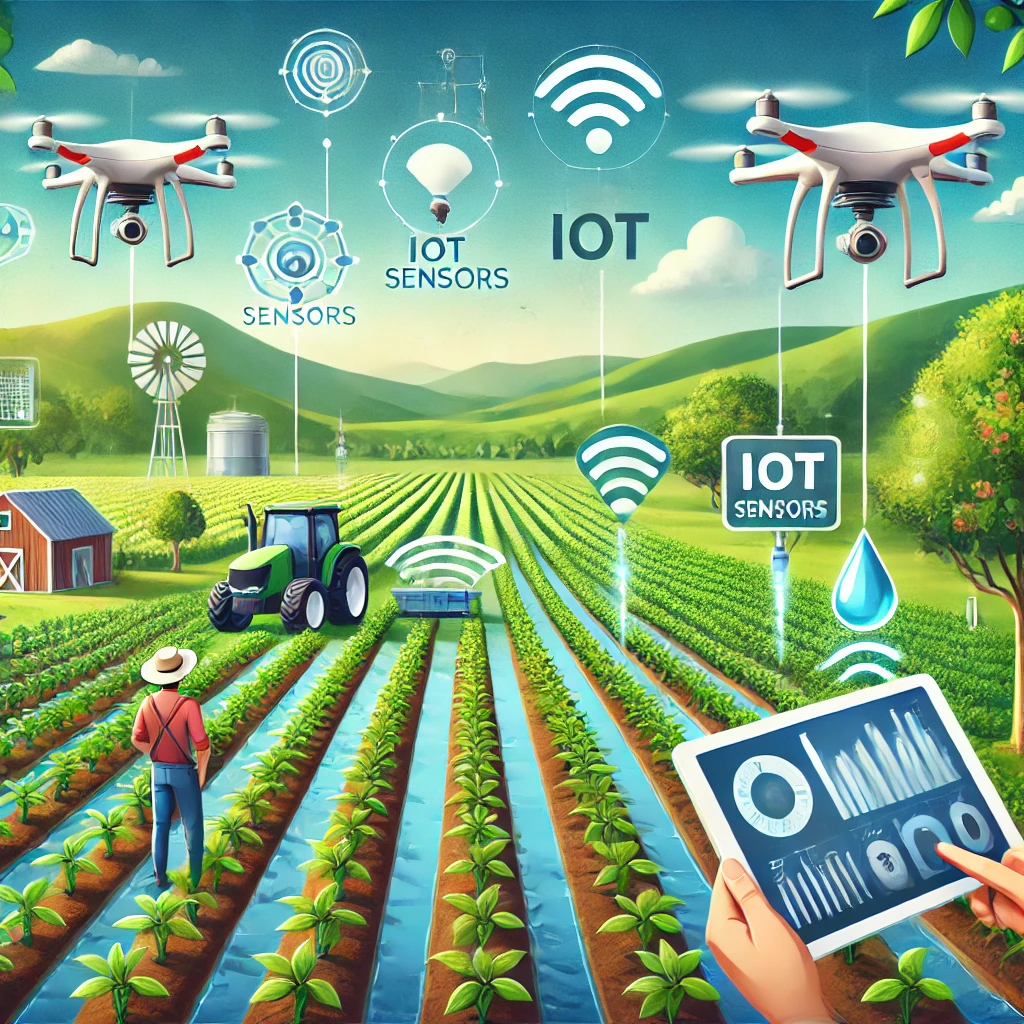 Scope of Rural Marketing
Scope of Rural Marketing
This is the fourth part of our blog series on Rural Marketing. In the previous blogs, we covered the types and challenges in Rural marketing. In the third edition of the blog series, we covered the aspects of Rural marketing in India.
While making and implementing marketing strategies, marketers believe that transportation and communication options have converted the world into a large village. They assume that most consumers these days live in urban areas, and their disposable income grows consistently.
However, the data collected by the United Nations (UN) suggest that only 55% of the world’s population currently live in urban areas. In several developing countries, the rural population is much higher than the urban population. For instance, about 35-37% of India’s population live in urban areas in 2024. So our rural population is around 63-65% of our total population. The statistics and data depict the significance and scope of rural marketing across countries. No domestic or multinational company can sustain profitable growth without supplementing urban marketing with rural marketing.
As a marketing system, rural marketing makes companies consider consumers living in rural customers while planning, developing, pricing, distributing, and promoting products/services. Each company can implement rural marketing concepts by adopting various approaches – urban to rural, rural to urban, and rural to rural.
Rural marketing creates opportunities for enterprises in various sectors to expand their customer base, generate incremental revenue, and outperform competitors. We can discuss the scope of rural marketing based on significant changes and recent developments across regions.
Important Factors Influencing and Impacting the Scope of Rural Marketing
Size of Rural Consumer Base
Rural urbanization is an ongoing process. People living in rural areas move to cities regularly to find better commercial and employment opportunities. However, the annual rural population growth rate is still increasing in many countries. The substantial size of the rural population creates opportunities for companies in various sectors to expand their customer bases across regions.
Increase in Firm Income
Several studies suggest a consistent increase in farmers’ income across countries. Farmers these days increase agricultural income in several ways – growing cash crops, adopting modern farming practices, using modern equipment, and leveraging agricultural subsidies. Rural prosperity results in increasing farmers’ disposable income and purchasing power. Enterprises have been expanding the scope of rural marketing by leveraging rural prosperity.
New Job Opportunities
Governments have been creating new employment opportunities in rural areas. Various programs and schemes launched by governments enable educated and qualified people living in villages to earn money without engaging in agricultural activities. For instance, many educated youth in India these days earn recurring income by working as teachers, Anganwadi workers, craftspeople, and freelance professionals. The new-age rural employment opportunities increase the demand for various products and services in rural areas.
Consumption Growth
Often bloggers use consumption patterns as a key parameter while differentiating urban consumers from rural consumers. However, several recent studies suggest that there are no differences in food consumption in urban and rural areas. Also, the demand for certain products is 10% higher in urban areas than in rural areas. Hence, companies can increase revenue by offering the same products to rural and urban consumers simultaneously.
Untapped Markets
Most urban markets are already too saturated. No company can acquire market share without spending money on demand generation and customer acquisition. But most rural markets still remain untapped. Hence, companies can enter rural markets and acquire market share without incurring huge advertisement costs. The competition in urban markets makes many companies focus on tapping rural markets.
Lifestyle Changes
As noted earlier, rural urbanization is an ongoing process. The people living in rural areas aspire to adopt and experience urban lifestyles. Consistent increases in income and purchasing power enable rural consumers to afford products and services developed and launched for urban consumers. The lifestyle changes create opportunities for companies to generate incremental revenue by making their offerings available in various rural markets.
Smartphone Penetration
A significant percentage of rural people these days use smartphones and tablets regularly. The data released by a leading research firm depict that rural areas will be the growth driver of smartphone and internet penetration in 2025. Smartphone penetration alters the choices and lifestyle of consumers living in villages. They look for opportunities to buy the desired product without visiting the nearest town or city. Hence, companies can boost sales by making their products available in rural markets.
Rural Infrastructural Development
While implementing rural marketing strategies, companies often find it challenging to build distribution channels due to a lack of infrastructure. Governments have already made rural infrastructure development a top priority. They have been modernizing rural areas by building roads, tracks, bridges, schools, hospitals, and marketplaces regularly.
Rural infrastructural development helps companies make their products available in rural markets. Leading FMCG companies have already set up robust distribution systems in many developing countries. Likewise, many companies make consumer goods available in rural markets by partnering with local entrepreneurs, stores, and dealers.
Low-Cost Marketing Channels
In the age of e-commerce, companies can sell products to rural customers over the Internet. Also, they can create brand awareness, generate demand, and promote customer loyalty by running digital marketing campaigns. In addition to using search engines and social media, marketers can deliver tailored content to rural customers by sending emails.
At the same time, they can promote a product using conventional marketing strategies like mobile van marketing, retailer marketing, billboard advertising, and retail marketing. These conventional and digital marketing strategies help companies enter rural markets and acquire market share without incurring huge marketing and advertising costs.
Education and Awareness
Education and awareness play a pivotal role in shaping the rural marketing landscape. With increasing literacy rates and widespread educational initiatives, rural consumers are becoming more informed and discerning in their purchasing decisions. Awareness campaigns, often amplified by traditional media such as radio and newspapers, serve as key vehicles for building trust and disseminating information. Word-of-mouth remains a highly influential factor in rural communities, where interpersonal recommendations carry significant weight. These factors together create a more receptive audience for marketers, enabling businesses to introduce products and services that align with the evolving aspirations and needs of rural consumers.
Favorable Government Policies
Government policies and support have significantly boosted rural market growth by fostering infrastructure development and economic opportunities. Initiatives like “Digital India,” rural electrification, and rural housing programs have paved the way for better connectivity and enhanced the quality of life in rural areas, creating new avenues for businesses. Subsidies for agricultural tools, fertilizers, and small-scale enterprises further empower rural populations by increasing their purchasing power and encouraging entrepreneurial activities. These favorable policies not only stimulate rural demand but also enable companies to penetrate previously untapped markets effectively, driving mutual growth for businesses and rural communities.
Corporate Involvement and Initiatives
Corporate initiatives have played a pivotal role in unlocking the potential of rural markets through innovative and targeted strategies. Companies like ITC, with its “e-Choupal” initiative, have revolutionized agricultural supply chains by directly connecting farmers with markets through digital kiosks, providing better price transparency and cutting out intermediaries. Similarly, Hindustan Unilever’s “Shakti Project” empowers rural women by transforming them into entrepreneurs who distribute essential products within their communities, thereby creating employment opportunities and expanding the company’s reach. These initiatives showcase how businesses can align profitability with social impact by addressing the unique needs and challenges of rural markets through tailored, scalable models.
Growth of Rural Entrepreneurship & Small Businesses
The rural economy is no longer dependent only on agriculture. Many rural entrepreneurs are launching handicraft businesses, dairy farms, agrotech startups, and small-scale industries. This shift has created new business opportunities, allowing rural populations to generate income beyond traditional farming. Companies looking to expand in rural areas can support this sector by providing training programs for rural entrepreneurs, offering microfinance and credit solutions, creating distribution networks with local retailers, and leveraging direct-to-consumer (D2C) models to facilitate smoother transactions. By empowering rural entrepreneurs, businesses can foster economic development and build stronger, self-sustaining communities.
AgroTech Innovations
Agriculture remains a key driver of rural economies, and marketing in this sector presents enormous potential. Modern agrotech solutions, farm equipment, organic products, and precision farming technologies are becoming more widely adopted in rural areas. Companies are increasingly utilizing agri-input marketing strategies to promote seeds, fertilizers, and pesticides while leveraging digital platforms to connect farmers directly with markets. Innovations such as drones and IoT-based smart farming solutions are also gaining traction, improving efficiency and productivity. Additionally, government-backed rural development schemes are playing a crucial role in introducing new technologies to farmers. As the agricultural sector continues to evolve, businesses that integrate these advancements into their rural marketing strategies stand to benefit significantly.
Examples of Agritech Innovations
-
Precision Farming & IoT-Based Solutions – Companies like CropIn and Fasal use AI-driven analytics and IoT sensors to provide real-time data on soil health, weather patterns, and crop conditions, enabling farmers to make informed decisions.
-
Drones for Agriculture – Agritech startups like Garuda Aerospace and General Aeronautics are developing drones for spraying pesticides, monitoring crop health, and assessing farmland efficiently.
-
Smart Irrigation Systems – Companies like Jain Irrigation and Netafim have developed automated drip irrigation and precision water management solutions to optimize water usage and enhance crop yield.
-
Digital Marketplaces for Farmers – Platforms like AgriBazaar and Ninjacart help connect farmers directly with buyers, reducing dependency on middlemen and ensuring better prices for their produce.
-
Biotechnology & Sustainable Farming – Research-driven companies like Bayer CropScience and Syngenta are innovating in genetically modified crops, organic fertilizers, and bio-pesticides to improve productivity while ensuring sustainability.

Financial Services & Banking Expansion
With financial inclusion initiatives such as PM Jan Dhan Yojana and rural banking reforms, the demand for banking, insurance, and microfinance solutions in rural areas has surged. Rural marketing in the financial sector now encompasses micro-loans and rural credit schemes, the expansion of digital banking and fintech solutions, increased awareness programs for insurance and investment opportunities, and the promotion of self-help groups (SHGs) and financial literacy campaigns. Fintech startups have become instrumental in bridging the financial gap, ensuring that rural consumers have access to essential banking services. As technology continues to improve accessibility, financial institutions have a growing opportunity to expand their presence in rural markets.
Digital Transformation in Rural Marketing
The digital revolution is steadily transforming the rural landscape. With increased smartphone adoption and improved internet connectivity, rural consumers are now more accessible than ever before. This shift has opened up avenues for brands to engage with rural audiences through digital channels. Here are some key aspects:
E-Commerce Penetration:
Rural consumers are increasingly turning to online marketplaces to purchase products ranging from daily essentials to specialty goods. This change has encouraged businesses to create tailored e-commerce strategies that address the unique needs of these consumers.
Localized Digital Content:
To resonate with rural audiences, brands are focusing on creating content that speaks to local languages, cultures, and traditions. This localized approach helps in building trust and fostering community engagement.
Social Media and Influencer Marketing:
Digital platforms such as Facebook, WhatsApp, and regional social networks are proving to be effective channels for product promotions and customer engagement. Rural influencers and community leaders play a crucial role in disseminating information and encouraging trials among their peers.
Digital Payment Solutions:
The proliferation of mobile wallets and digital banking has simplified transactions in rural areas. Secure and user-friendly digital payment systems are not only driving online sales but also encouraging financial inclusion in these markets.
Overall, digital transformation in rural marketing is bridging the gap between urban and rural consumer behavior, providing companies with innovative ways to reach a traditionally underserved audience.
Future Outlook: Trends, Challenges, and Strategic Opportunities
As rural markets continue to evolve, several emerging trends and strategic opportunities are likely to shape the future of rural marketing. Some of these key trends include:
-
Increasing Consumer Sophistication: With rising literacy levels and exposure to digital content, rural consumers are becoming more discerning. This evolution in consumer behavior calls for more refined marketing strategies that emphasize quality, transparency, and personalized experiences.
-
Integration of Emerging Technologies: The use of technologies such as artificial intelligence (AI), Internet of Things (IoT), and big data analytics is poised to further enhance rural marketing efforts. These technologies can help in predicting consumer needs, optimizing supply chains, and delivering hyper-localized marketing campaigns.
-
Sustainable and Ethical Marketing: There is a growing trend toward sustainability in rural areas, driven by environmental concerns and the demand for locally sourced products. Brands that embrace ethical practices and sustainable business models may find greater acceptance among rural consumers.
-
Customized Product Offerings: Future strategies will likely involve a closer alignment of products and services with local tastes and preferences. Companies that invest in understanding the cultural and regional nuances of rural markets can develop offerings that address the specific needs of these communities.
-
Navigating Infrastructure and Regulatory Challenges: Despite the many opportunities, companies will need to remain agile in addressing infrastructural bottlenecks and regulatory issues that can affect market penetration. Strategic partnerships with local stakeholders and government bodies can be instrumental in overcoming these hurdles.
Looking ahead, the integration of technology, localized marketing practices, and sustainable business models will be key drivers in unlocking the untapped potential of rural markets. Businesses that are proactive in adapting to these changes are likely to secure a competitive edge in the rapidly evolving rural marketing landscape.
Conclusion
In 2024, a large percentage of the global population lives in rural areas. Several studies suggest a steady increase in recurring income and purchasing power of consumers living in rural areas. The rural population size and growing rural prosperity expand the scope of rural marketing.
Rural marketing creates opportunities for domestic and multinational companies to increase revenue and profits by targeting rural consumers. However, an enterprise cannot enter into rural markets using urban marketing channels and strategies.
It has to implement custom rural marketing strategies that consider the consumer behavior that differentiates rural customers from urban customers. Also, the strategy must focus on driving sales by overcoming existing and emerging rural marketing challenges proactively.
We refreshed this blog in February 2025 to make it more suitable for our readers.









Leave a Reply